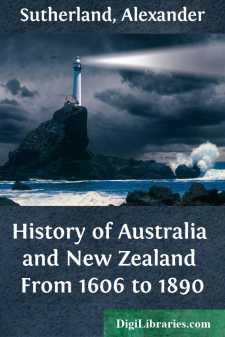Categories
- Antiques & Collectibles 13
- Architecture 36
- Art 48
- Bibles 22
- Biography & Autobiography 813
- Body, Mind & Spirit 142
- Business & Economics 28
- Children's Books 13
- Children's Fiction 10
- Computers 4
- Cooking 94
- Crafts & Hobbies 4
- Drama 346
- Education 46
- Family & Relationships 57
- Fiction 11828
- Games 19
- Gardening 17
- Health & Fitness 34
- History 1377
- House & Home 1
- Humor 147
- Juvenile Fiction 1873
- Juvenile Nonfiction 202
- Language Arts & Disciplines 88
- Law 16
- Literary Collections 686
- Literary Criticism 179
- Mathematics 13
- Medical 41
- Music 40
- Nature 179
- Non-Classifiable 1768
- Performing Arts 7
- Periodicals 1453
- Philosophy 64
- Photography 2
- Poetry 896
- Political Science 203
- Psychology 42
- Reference 154
- Religion 513
- Science 126
- Self-Help 84
- Social Science 81
- Sports & Recreation 34
- Study Aids 3
- Technology & Engineering 59
- Transportation 23
- Travel 463
- True Crime 29
History of Australia and New Zealand From 1606 to 1890
Categories:
Description:
Excerpt
CHAPTER I.
1. To the people who lived four centuries ago in Europe only a very small portion of the earth’s surface was known. Their geography was confined to the regions lying immediately around the Mediterranean, and including Europe, the north of Africa, and the west of Asia. Round these there was a margin, obscurely and imperfectly described in the reports of merchants; but by far the greater part of the world was utterly unknown. Great realms of darkness stretched all beyond, and closely hemmed in the little circle of light. In these unknown lands our ancestors loved to picture everything that was strange and mysterious. They believed that the man who could penetrate far enough would find countries where inexhaustible riches were to be gathered without toil from fertile shores, or marvellous valleys; and though wild tales were told of the dangers supposed to fill these regions, yet to the more daring and adventurous these only made the visions of boundless wealth and enchanting loveliness seem more fascinating.
Thus, as the art of navigation improved, and long voyages became possible, courageous seamen were tempted to venture out into the great unknown expanse. Columbus carried his trembling sailors over great tracts of unknown ocean, and discovered the two continents of America; Vasco di Gama penetrated far to the south, and rounded the Cape of Good Hope; Magellan, passing through the straits now called by his name, was the first to enter the Pacific Ocean; and so in the case of a hundred others, courage and skill carried the hardy seaman over many seas and into many lands that had lain unknown for ages.
Australia was the last part of the world to be thus visited and explored. In the year 1600, during the times of Shakespeare, the region to the south of the East Indies was still as little known as ever; the rude maps of those days had only a great blank where the islands of Australia should have been. Most people thought there was nothing but the ocean in that part of the world; and as the voyage was dangerous and very long—requiring several years for its completion—scarcely any one cared to run the risk of exploring it.
2. De Quiros.—There was, however, an enthusiastic seaman who firmly believed that a great continent existed there, and who longed to go in search of it. This was De Quiros, a Spaniard, who had already sailed with a famous voyager, and now desired to set out on an expedition of his own. He spent many years in beseeching the King of Spain to furnish him with ships and men so that he might seek this southern continent. King Philip for a long time paid little attention to his entreaties, but was at last overcome by his perseverance, and told De Quiros that, though he himself had no money for such purposes, he would order the Governor of Peru to provide the necessary vessels. De Quiros carried the king’s instructions to Peru, and two ships were soon prepared and filled with suitable crews—the Capitana and the Almiranta, with a smaller vessel called the Zabra to act as tender....


